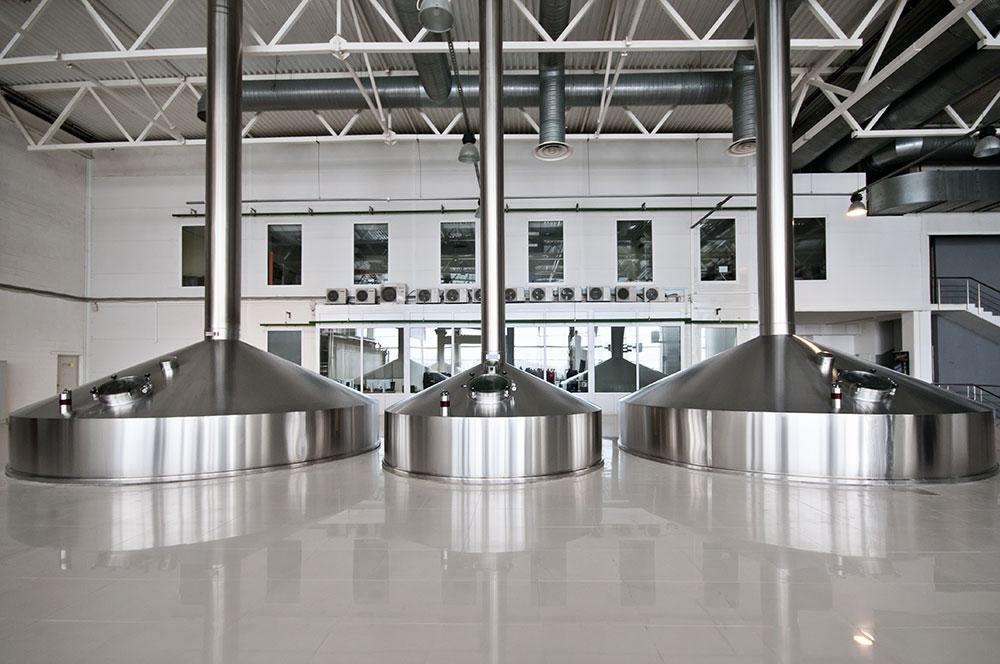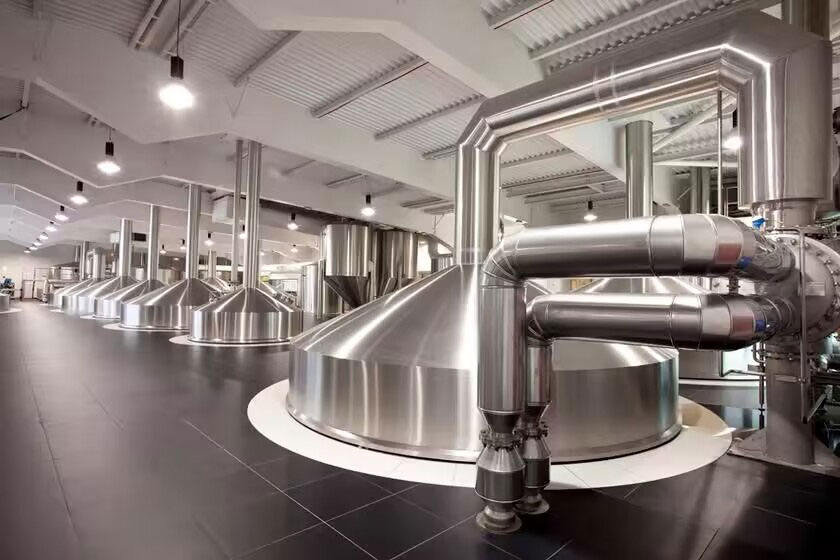- Boiling at atmospheric pressure is the most common traditional brew method. The basic idea of low-pressure boiling is that a series of conversion processes proceed more quickly if the pressure and hence the boiling temperature are higher than 100℃. With a pressure of 0.11 to 0.12 MPa, the boiling point can reach 120℃.
- Key temperature during boiling at atmospheric pressure:
· The wort enters the brew kettle and heats up from 75°C to 100°C within 15-20 minutes
· Boil at 100℃ for 55-75 minutes
The total heating time is 70-90min, and the total evaporation volume is 8%-12%.
- Key temperature during boiling at low pressure:
· The wort enters the brew kettle and heats up from 75°C to 100°C within 15-20 minutes
· Boil at 100℃ for 10 minutes
· Raise boiling temperature from 100℃ to 102℃-104℃ within 10-15min
· Boil at low pressure, temperature 102-104℃, time about 15 minutes
· Lower the pressure and keep it for about 15 minutes
· Raise the pressure again, and boil at temperature of 102-104℃ for about 15 minutes
· Steam decompression, cooling to 100℃ within 15min
· Boiling at 100℃ for about 10 minutes
The total heating time is 60-70 min, and the total evaporation volume is 4%-6%.
- Key temperature during dynamic boiling at low pressure:
· Raise wort temperature from 72℃ to 100℃ in about 15 minutes
· Pre-boil at 100℃ for about 5 minutes
· Raise the temperature from 100℃ to 102℃-104℃ within 10 min
· Lower the pressure in 4 minutes and keep it at 101℃
· 3 minutes to increase the pressure and temperature to 102℃-104℃
· Repeat this process 5-6 times
· Finally, release the pressure to 100℃ within 15min.
· Boil at 100℃ for about 10 minutes
The total heating time is about 57 min.
- The outlet temperature of the condensate depends on the boiling method. It can reach 96°C with atmospheric pressure boiling or 102°C with low pressure boiling.
- Hop extract becomes liquid at 45-50°C.
- To make clear wort, the hot and cold break must be separated quickly after boiling. The wort is cooled to the required fermentation temperature (6-9°C for the bottom fermentation and 12-18°C for the top fermentation). While cooling, oxygenate the wort to provide enough oxygen for yeast growth.
- Use a plate heat exchanger to reduce the wort temperature from 95℃-98℃ to 6℃-8℃. The cooling medium is cooled tap water or other refrigerant.
- The wort transfers heat to cold process water in the larger pre-cooling section. Whilst the wort is cold water to about 40℃-50℃. In the smaller low-temperature cooling section the wort is cooled by cold water at 1-2℃ to the desired pitching temperature.
- In one stage cooling process, cooled cold water at 1-2℃ is heated in the plate heat exchanger to 75℃-88℃ whilst the hot wort at 95-98℃ is cooled to the pitching temperature.
- Preparation of ice water: The brewing water is pumped to the refrigerator, where is cooled to 3℃-4℃ and stored in a cold liquor tank for later use.



